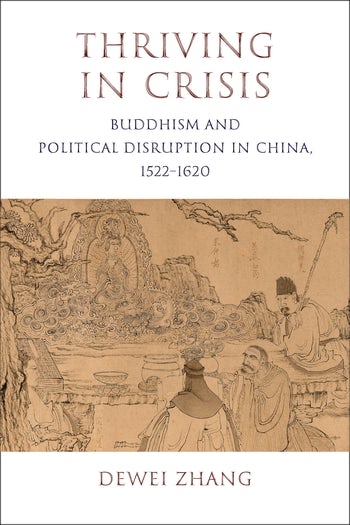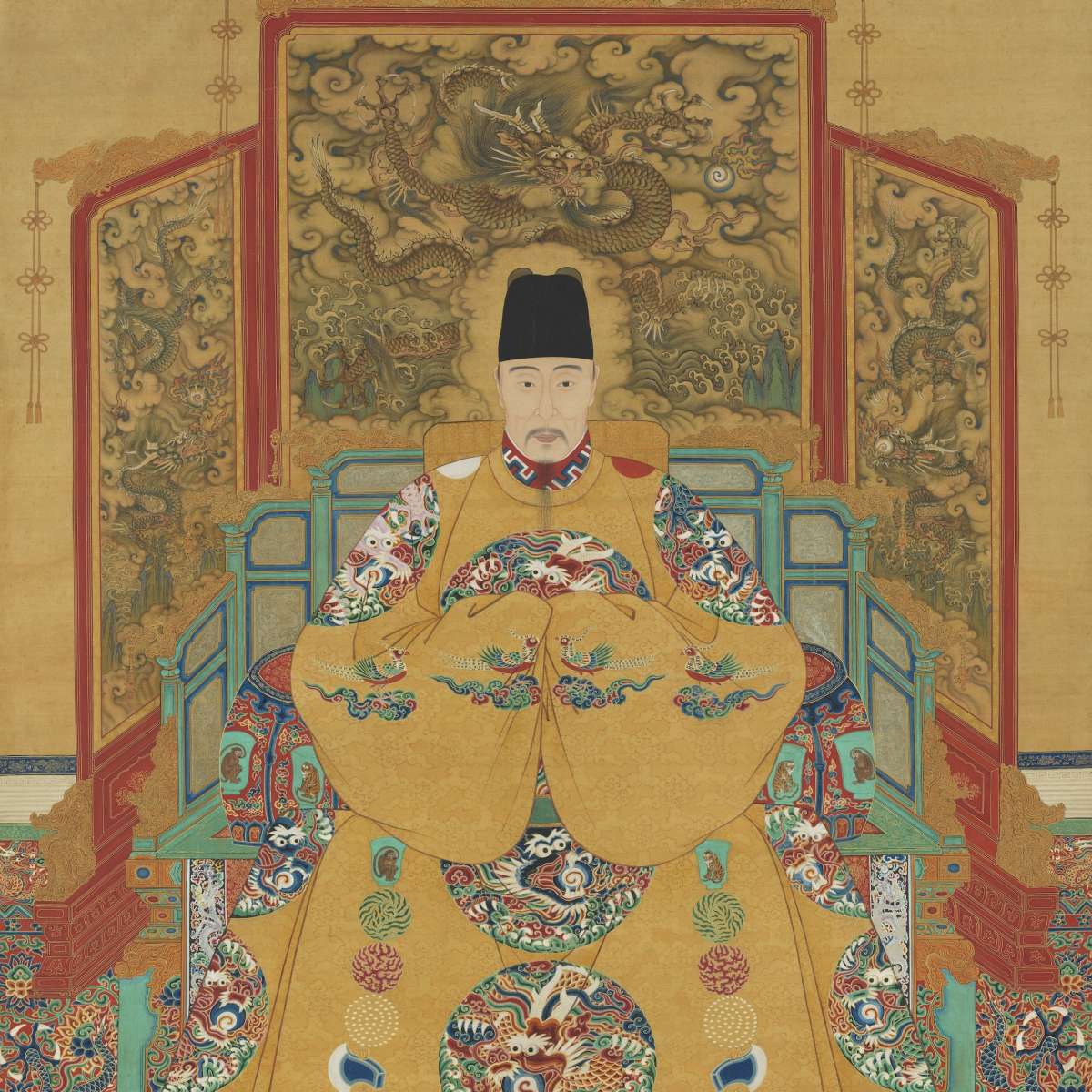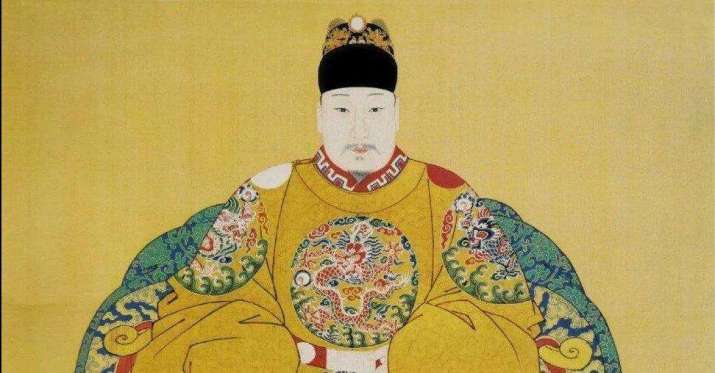
While the idea of Buddhism reaching an unequivocal nadir in the Ming dynasty (1368–1644) is outdated in scholarly circles, it persists because there remains the popular perception, even in today’s Buddhist circles, that Buddhism reached its intellectual and philosophical zenith in the Tang dynasty (618–907), before being crippled by multiple crises and persecutions and then declining in the Song (960–1279) and Ming. This is neither completely mistaken nor the full story. Columbia University Press has yet again released a groundbreaking study that can shift the scholarly—and perhaps years down the line, the popular—understanding of the experience of Buddhism during the Ming. Zhang Dewei’s book, Thriving in Crisis: Buddhism and Political Disruption in China, 1522–1620, is a tour de force that takes as its beginning question: how did the late-Ming Buddhist renewal become possible after a stagnant period of more than 100 years, and examines “the reinvigoration from both religious and nonreligious perspectives to look for the required dynamics and momentum.” (p. 7)
Zhang’s methodology is straightforward but rigorous and meticulous as he draws most inspiration from the French Annales school:
Through examining the roots of what would eventually grow into a full-scale renewal, the hope is to create a much more coherent picture and time frame of the overall revitalization. Moreover, in echoing the emphasis of the Annales school on structural factors, this study examines the early Ming, when state ideologies were set up and Buddhist policies designed. Consequently, it approaches the renewal from three perspectives of about fifty, one hundred, and two hundred years. (p. 12)
Through this methodological lens, Zhang sets out to and succeeds in combining macroscopic narrative and microscopic historical analysis, along with political science, to tell a riveting and persuasive story of the Buddhist renewal in Ming China.
The book is demarcated by sections that focus on specific factions and individuals that shaped the trajectory of Ming-era institutional Buddhism. For example, chapters two and three respectively cover the Jiajing Emperor (1507–67) and Empress Dowager Cisheng (1545–1614). Chapters Four, Five, Six, and Seven discuss respectively the involvement in Buddhism by eunuchs, scholar-officials, eminent monks, and temples: all influential interest groups and constituents in their own right in the Late Ming. Finally, Chapter Eight discusses a particularly damaging blow to the Buddhist order in China: the loss of the imperial capital Beijing as a power base. In each chapter, considerable attention is paid to specific individuals and how they steered the advancement of their group’s interests. The Jiajing Emperor, long before the actual thriving that is in the title of the book, was responsible for inflicting several long-lasting blows against an already precariously positioned Buddhist community:
Jiajing’s harshness toward Buddhism reflected his religious preference as an individual, but as an emperor he did not alter the established position of the state, with the important exception of closing the ordination platform. Religious piety, political calculation, and perceived cultural and moral ideals all worked behind his antipathy toward Buddhism. Notably, on some occasions his target was not Buddhism in general but particular groups like nuns. . . .
Both as an emperor commanding his subjects to observe his orders and as a role model inviting others to follow voluntarily, Jiajing had a profound effect on the Buddhism of his age. In the inner court, he was successful in holding back enthusiasm for Buddhism among the courtly elites. In local society outside the capital, the effect of his antipathy toward Buddhism was often amplified when local officials, as demonstrated by the Jiangxi and Nanjing cases, modeled themselves on him while maintaining their own agendas. This situation persisted for nearly fifty years and thus fostered an environment generally hostile to Buddhism. (p. 54)

By contrast, Empress Dowager Cisheng, mother of the Wanli Emperor (1563–1620), was a powerful and sincere patron of Buddhism. Zhang notes that based on collated textual evidence, she contributed through three avenues: “financial support of Buddhist temples, distribution of the Buddhist canon, and direct links with monks.” (p. 67). She “managed to garner large support and patronage for Buddhism during the first two decades owing to certain onetime advantages but then suffered severe restrictions because of a constant exposure to two vulnerabilities: her status as a court woman and Buddhism as heterodoxy.” (p. 88)
Along for this volatile, constantly shifting political ride were the eunuchs, whose power, according to Zhang, was “essentially dependent on the emperor’s favor,” and therefore “proved most sensitive to changes in the political climate. They adjusted their stances swiftly in alignment with the emperors so as to protect if not maximize their own interests. Since there were drastic changes in the ways the sovereigns dealt with Buddhist affairs during the Jiajing-Wanli period, the priority eunuchs gave to the rulers’ preferences over their own made their relationship with Buddhism complex.” They were generally supportive of Buddhism, and as a large group they could “mobilize massive amounts of resources to back Buddhism. But the fragility inherent in the pseudofamilial relationship was evident and inevitable. Once an influential benguan died or lost power, it usually meant the end of the groups (and thus the yihui) built around him.” (p. 105)
One of the main faces of the Chinese political elite, the scholar-officials, also had an ambiguous relationship with Buddhism. “Contextually, Jiajing’s anti- Buddhism policy contributed greatly to scholar-officials’ indifference to or even encroachment on Buddhism, while Cisheng’s appearance in the political arena rekindled enthusiasm in the early Wanli years.” The relationship between institutional Buddhism and this bureaucratic elite was one of mutual reinforcement in good times, or a vicious cycle of ideological abandonment (by the scholar-officials) and over-dependence on increasingly fewer patrons (by the monasteries) in bad times. Zhang writes: “As captured by the metaphor of the two-headed horse, Buddhism never took full control in defining its relationship with scholar-officials. What could happen to Buddhism if scholar-officials, who served as significant intellectual, social, and economic resources, returned en masse to Confucianism and to the state at the cost of Buddhism?” (p. 155)

The final and most important power faction was that of the monastic sangha, whose primary players Zhang identifies as Hanshan Deqing (1546–1623), Miaofeng Fudeng (1540–1612), and Zibo Zhenke (1543–1604). Despite their charisma and ambition:
They all suffered under structural restrictions on Buddhism that can be traced back to the early Ming. None of them had sufficient resources at their command, which resulted from the greatly weakened monastic economy. There were no orchestrated actions on a higher level when they engaged in these large-scale projects. The chance of success was significantly reduced, but this lack of collaboration had less to do with their personal choices than with the lost institutional autonomy of the saṃgha. . . . Although Buddhism at times appeared promising, its weak and marginal position within the power structure was little improved. In this context, these ambitious monks had to depend heavily on the secular world, which rendered them vulnerable to contemporary politics. (p. 197)
Zhang’s last main chapter explores the considerable insight that temples in the Beijing area can provide about the fortunes of Buddhism during each significant period of decline or revival in the Ming. His final thought in his conclusion is extremely insightful if sober: for varying and complex reasons, despite several concerted revival efforts by Ming imperial, courtly, bureaucratic, and monastic forces, “the Buddhist renewal came to an end in the early Qing dynasty and remained thereafter at a low ebb.” (p. 247)
This book is a superior monograph that provides an updated and comprehensive foundation for contextualizing the weaknesses to which Buddhism became vulnerable during the Ming, which lasted well into the Qing dynasty. The perception of Buddhism’s stagnant state during these two dynasties had deep roots stretching all the way to the Jiajing Emperor’s reign. It is precisely due to this unsavory reputation that the real and powerful surge of Buddhist revitalization from the Wanli Emperor’s reign onward needs urgent and systematic attention. To overlook it would be a disservice to that period of Chinese Buddhist history, for just as we must examine periods of decline or inertia, we should also look with interest at the times when Buddhism makes a comeback, no matter how short-lived.
See more
Thriving in Crisis (Columbia University Press)












